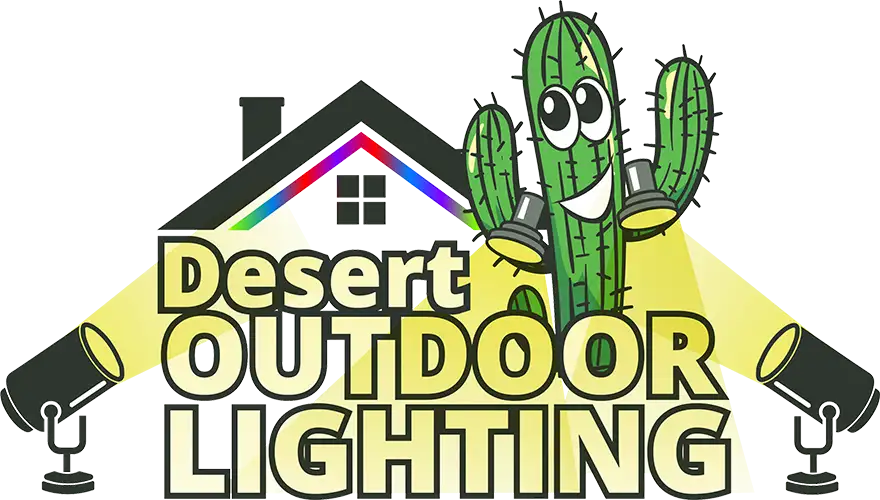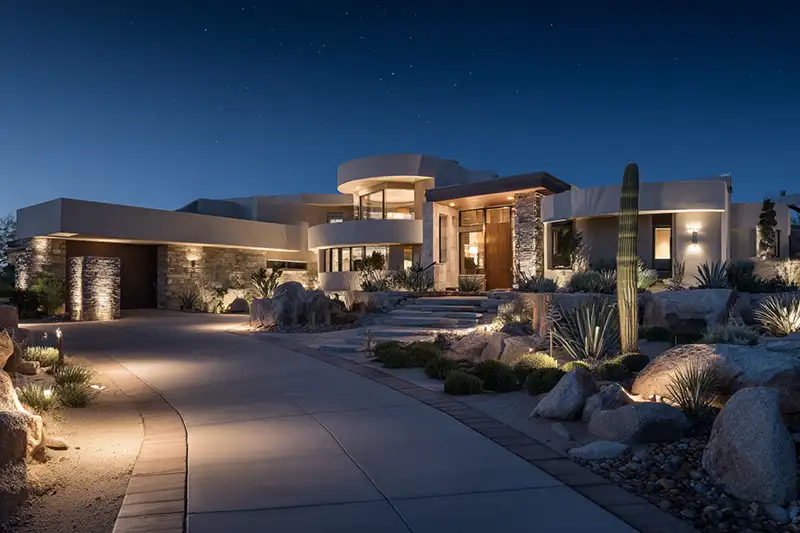Outdoor landscape lighting has the power to transform a property, adding ambiance, functionality, and curb appeal long after the sun sets. Whether it’s accenting architectural features, highlighting trees and pathways, or providing safety along walkways and entry points, the right lighting brings outdoor spaces to life. And today, more homeowners and businesses are turning to LED lighting as their go-to solution. The benefits of using LED in outdoor landscape lighting go far beyond energy savings,they touch every aspect of performance, reliability, and design flexibility.
One of the most obvious advantages of LED lighting is its exceptional energy efficiency. Compared to traditional incandescent or halogen bulbs, LED lights use up to 80% less energy while providing the same level of brightness. This translates to a lower monthly electric bill, which is especially important for those running multiple landscape fixtures for extended hours each night. If you enjoy keeping your lights on from dusk to dawn or using smart timers to run scheduled routines, LED lights help make that possible without inflating your energy costs.
Another major benefit is longevity. Most LED landscape lights are rated to last 25,000 to 50,000 hours or more. That means once you install a quality system, you likely won’t need to replace bulbs for years. This is particularly valuable in outdoor applications where fixtures may be mounted in hard-to-reach places or buried in garden beds, making replacement time-consuming or disruptive. With LED, you get peace of mind knowing your lights will keep working through many seasons of weather and wear.
Speaking of weather, LED lighting excels in durability. Unlike traditional bulbs that can be fragile and sensitive to temperature changes, LED lights are solid-state and extremely resilient. They’re built to withstand everything from Arizona’s scorching summers to winter chills, as well as wind, rain, dust, and debris. This makes them ideal for exterior use where performance has to remain consistent despite environmental challenges. Many LED landscape lights are sealed and rated IP65 or higher, ensuring protection against the elements.
One often overlooked benefit of LED lighting is the quality of light it produces. LEDs are available in a wide range of color temperatures,from warm whites that mimic candlelight to cooler, modern tones. This allows for greater control over the mood and ambiance of your outdoor environment. Whether you want soft lighting for a garden pathway or crisp, clean lighting to illuminate architectural features or signage, LEDs give you the flexibility to tailor your lighting to the specific look and feel you want.
LEDs are also highly directional, meaning the light goes exactly where you aim it. Unlike incandescent bulbs, which emit light in all directions and require reflectors to redirect it, LEDs focus their beam precisely. This is especially useful in outdoor landscape applications where you want to highlight specific elements,like uplighting a tree, spotlighting a sculpture, or casting a wash of light across a wall. The ability to control light output reduces glare, minimizes wasted light, and enhances the overall design.
From a safety standpoint, LED lighting offers multiple advantages. The low-voltage nature of most LED landscape systems means they’re much safer to install and operate around homes, gardens, pets, and children. They also emit far less heat than halogen or incandescent bulbs, reducing the risk of burns or fire near dry vegetation or mulch. This cooler operating temperature also benefits the fixtures themselves by reducing thermal wear and extending component life.
Another standout benefit is automation and smart integration. Most modern LED systems can easily be connected to timers, motion sensors, photocells, or even smart home platforms. You can set lighting zones, schedule different times for front and backyard illumination, or activate lights remotely from your smartphone. This level of control and customization simply isn’t possible with outdated lighting systems.
Sustainability is also a key reason to go with LED. Because they use less power and last significantly longer, LEDs reduce waste and carbon footprint. Many fixtures are also made with recyclable materials and don’t contain harmful elements like mercury, which is found in some fluorescent options. Choosing LED is not only better for your wallet, but also better for the environment.
Finally, there’s the matter of design freedom. LED technology continues to evolve, bringing sleeker, more compact fixtures to the market. This gives lighting designers and homeowners the ability to hide fixtures more easily, fit them into tighter spaces, and create clean, modern lighting effects without bulky equipment. From tiny pathway lights to bold architectural accents, LED fixtures come in all shapes, sizes, and styles to suit any outdoor design concept.
At the end of the day, investing in LED for your landscape lighting isn’t just a trend,it’s a smart, future-proof decision. It combines beauty, performance, safety, and cost savings in a way that traditional lighting options simply can’t match. Whether you’re upgrading an existing system or designing a new outdoor lighting layout from scratch, LED lighting delivers long-term value, low maintenance, and stunning results that shine every night.


